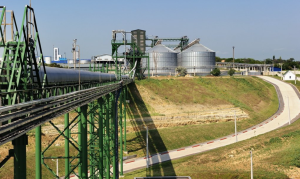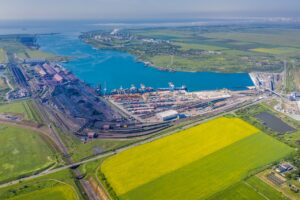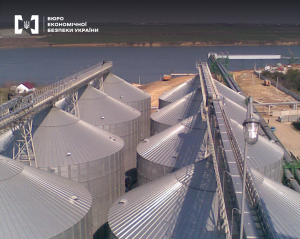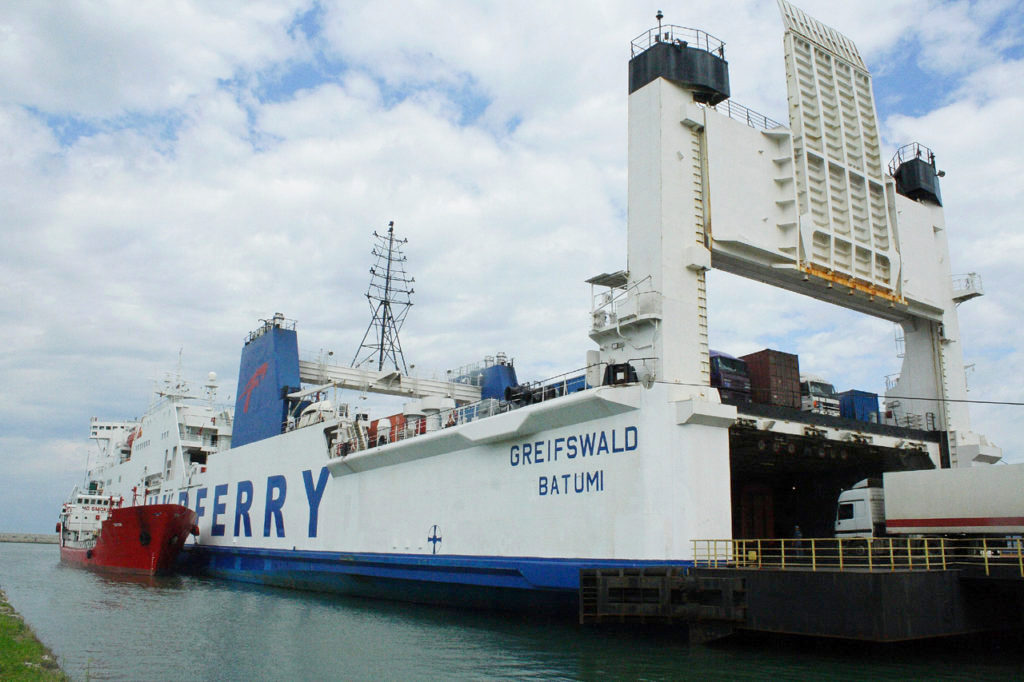New transshipment complex in Pivdennyi. An investment near miss?
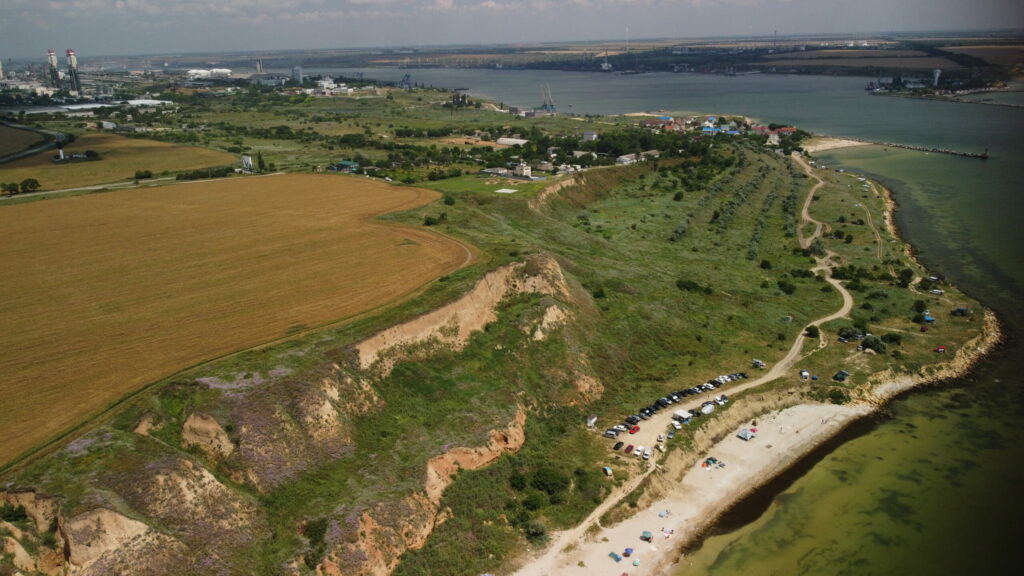
Preview photo by Anatoly Korzh
USPA has announced the construction of a new complex for transshipment of oil and grain in the port of Pivdennyi. USM is investigating the reasonability of the project.
The Administration of the Pivdennyi seaport presented a project for the developing of a new terminal “Construction of a berthing and technological complex of Tehagro Company LLC”. They even want to include the project in the Pivdennyi seaport Development Plan.
Read also: The most-most port of Pivdennyi: from Hammer to the present day
Construction is promised to begin in 2022, and it is planned to commission the facility in 44 months. The terminal is expected to handle 2.7 million tons of grain and 200 thousand tons of oil per year, and will pay off within 6 years after commissioning.
The terminal will be built on a plot of 29 hectares, on the southwestern shore of the Small Adjalyk Estuary. As USM managed to find out, we are talking about a land plot bordering on OPP PJSC and a coastal recreational area. Part of the land for the project is also located on a neighboring agricultural plot.
Back in 2018, Tehagro announced plans to build three terminals in the port of Pivdennyi: grain, container, and a terminal for general and bulk cargo. The total cost of the facilities is $198 million. Initially, the construction of the grain terminal was planned for 2020, and commissioning – in 2021.
In parallel, in January 2019, the Antimonopoly Committee of Ukraine received an appeal from Brociti Investments Limited about its intention to acquire control over another Cypriot company, Serfilana Commercial LTD, as reported by the enkorr publication. The Burisma gas production company was registered on Brociti Investments Limited.
Serfilana Commercial LTD as of January 2019 owned 4 Ukrainian companies – Agrostil Company LLC, Tehagro Company, Tehagro-Invest and Agroprom Investment Company. These are 4 out of 5 structures from the Zlochevsky neighborhood, which in the summer of 2014 acquired/leased 80 hectares of land around berth №38 of the Yuzhny seaport for the placement of structures for “sea transport”. At that time, an oil transshipment complex was planned at this site. Now, on a part of these lands, it is planned to place a new Tehagro project for transshipment of grain and oil.
Underwater land issue
In the coming days, the court will consider the issue of the “underwater” land plot of the Tehagro project. The lawsuit was filed by the USPA represented by the Pivdennyi branch in April last year. The authority demanded that the agreement between Tehagro and the Novy Belyary village council on the lease of a land plot for 49 years “for the construction, maintenance and operation of engineering and transport infrastructure of maritime transport” was declared invalid.
The question concerned a land plot under water – the bottom of the Small Adjalyk Estuary, with an area of 0.86 hectares. The company only leased the land, not the water body itself. Therefore, the matter went to court.
The USPA received a refusal to satisfy the lawsuit, until the issue was transferred to the court of cassation, which on June 15th partially satisfied the complaint of the state enterprise. The court also ruled to transfer the case for a new consideration to the Economic Court of the Odesa region. According to the register of judgments, the hearing is scheduled for September 13th.
It remains unclear how the plaintiff and the defendant can cooperate during the trial. Perhaps the parties managed to come to a compromise solution, or the USPA’s lawsuit does not conflict with the interests of Tehagro, but is aimed at correcting inaccuracies in the execution of the lease agreement. Note that the controversial area on the water is not indicated in the new project.
There are also many unclear points in the new grain terminal project that the company may resolve or clarify for the public in the future.
Depth
At the moment, the draft at berth №38, which Tehagro claims to, does not allow the future terminal to accept deep-sea vessels for grain. The draft at the berth is 7 m, its length is about 50 m. Now only boats are moored there.
Possibly, in parallel with the construction of the terminal, the company plans to carry out dredging works and/or build new berths or piers.
If we talk about the use of barges and offshore reloading, then one more difficulty arises. The plot of land for the future terminal is located next to the gate to the port of Pivdennyi. And the berth is located directly near the canal, the depth of which is 19.2 m. Accordingly, if additional loading is organized with the participation of a barge and a floating crane, Tehagro can interfere with the passage of vessels of other carriers.
Logistics
How the cargo will be delivered to the new terminal is not yet clear either. The existing railway line leads to the Odesa Port Plant (OPP), and delivers cargoes to the companies Brivage, Delta-Vilmar and, in fact, OPP. The branch “will not cope” with the additional load. Firstly, it is expensive to build your own port station following the example of TIS. Secondly, it is not known whether Ukrzaliznytsia will agree to connect a private station to its network, as it happened with TIS.
The road to the potential terminal is also questionable, both from the side of the load and from the side of the availability of sites for heavy trucks. Borivazh faced a similar problem, road conflicts in 2013-2014 led to the fact that the enterprise nevertheless built a parking lot for trucks for 300 parking slots. Delta-Wilmar and TIS approached the solution of the situation in a similar way, having built parking lots for 200 and 1500 slots, respectively.
Whether Tehagro plans to build a parking lot and where it will be located is still unknown – the project plan has not yet been published.
Will there be cargo?
In the ideal case, the future terminal should have one or more key customers “on notice” in order to reduce risks and start the operation of the enterprise immediately after commissioning.
Pivdennyi handles most of the country’s total grain exports, these are four grain terminals. Three more terminals handle oil, in addition, two of them (Allseeds and Delta-Wilmar) also operate oil crushing plants. Will the new terminal be competitive? What can Tehagro offer the client that the port neighbors do not have?
With the current drop in transshipment rates, there is simply nowhere to dump the market. In addition, analysts predict a further drop in rates, which in itself delays the payback period of the project for grain, not to mention the potential loss ratio.
Will there be a third plant?
The declared indicators of Tehagro for the processing of sunflower seeds – 80 thousand tons per year, vegetable oil – 200 thousand tons. In the current environment, this is extremely small, especially for a specialized terminal. But, apart from the pier and railway tracks, hardly anything can be unified with a grain terminal.
On the other hand, the project area of 29 hectares needs to be occupied with something. How efficiently the land will be used is a question. But there is an example of an unproductive Risoil-Yug, which is used only at 15-20% of its design capacity.
In addition, the production of oil implies the formation of products of its processing – meal and cake. Usually, storage of these products is organized in flat storages due to the nature of the cargo. Nevertheless, in the project of the new terminal, they do not yet speak of warehouses for meal and cake, although the area of the site is quite sufficient to accommodate them.
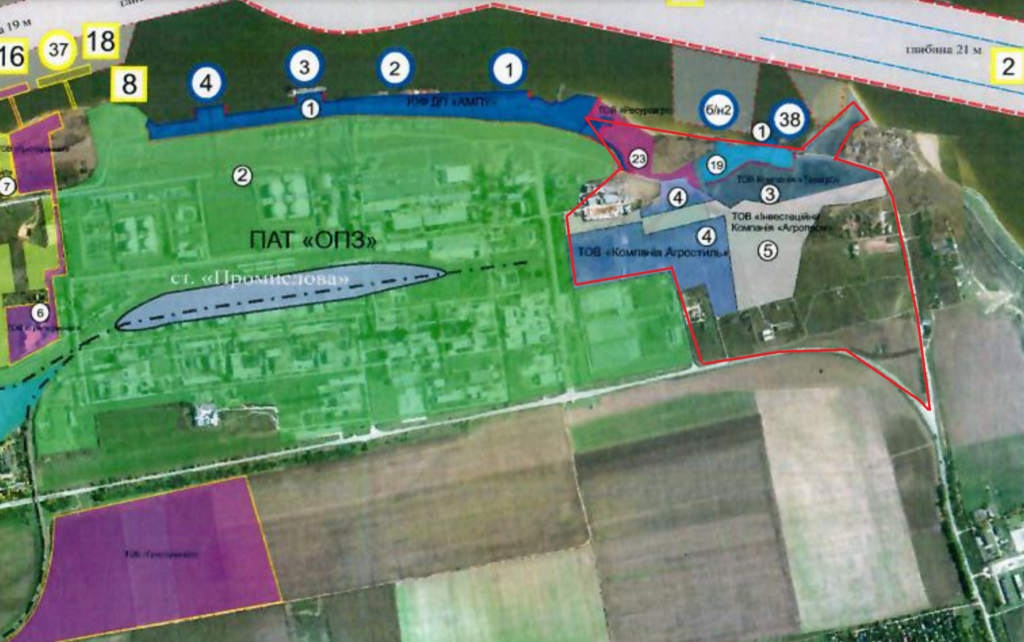
On the layout of the port of Pivdennyi on the Ukrainian Sea Ports Authority website, you can see that on the site for the construction of a new grain terminal, all new agricultural companies are located next to each other under the leadership of Zlochevsky – Agrostil, Tehagro, Agroprom. On the port’s satellite map, these tracts of land are almost empty, apart from a few small warehouses.
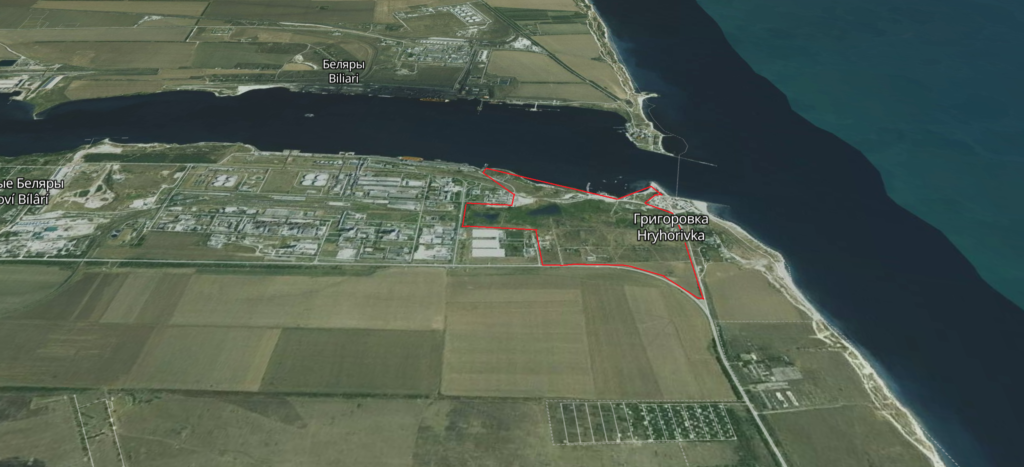
Probably, the company presented the Pivdennyi Port Authority with the initial version of the terminal construction project, “sketch”; and in the future we will find out the answers to riddles about cargo delivery, dredging, warehouses and, possibly, even about the court. But Zlochevsky’s companies specialize in the oil and gas industry, therefore, in a new industry for themselves, they might not have yet figured out all the nuances and possible risks.
Reference: Tehagro Company LLC specializes in the construction of waterside structures, wholesale trade, water transport services. The founders of the legal entity are Agroport Investments and Serfilana Commercial (both in Cyprus). The ultimate beneficiaries are Zlochevskaya Karina Mykolaivna and Zlochevskaya Anna Mykolaivna.
The authorized capital of the enterprise is over UAH 70 million (USD 2.65 million). In 2020, the company received a net profit of UAH 17.7 million (USD 670.32 thousand). As of the end of 2020, the value of Tehagro assets amounted to UAH 44.8 million (USD 1.69 million).
Mykola Zlochevsky is a Ukrainian entrepreneur, President of Burisma Holdings, the largest gas production company in Ukraine. In 2010-2012 served as Minister of Ecology and Natural Resources of Ukraine. 2012 to 2014 – Deputy Secretary of the National Security and Defense Council (NSDC). Anna and Karina are daughters of Zlochevsky. The latter is a member of the Board of Directors of Burisma Holdings.
Burisma Holdings is a Ukrainian private gas production group, the only vertically integrated holding company in the country for the exploration, production, service and sale of hydrocarbons. The headquarters of the company is located in Cyprus.
Olha Gorbenko.

